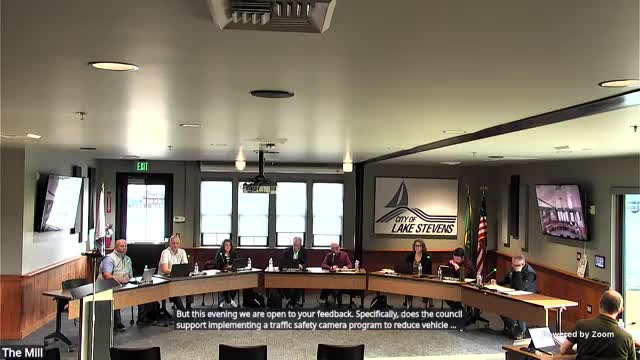Lake Stevens Council discusses traffic camera enforcement in school zones and safety funding
March 29, 2025 | Lake Stevens, Snohomish County, Washington
Thanks to Scribe from Workplace AI , all articles about Washington are free for you to enjoy throughout 2025!

This article was created by AI using a video recording of the meeting. It summarizes the key points discussed, but for full details and context, please refer to the video of the full meeting. Link to Full Meeting
The proposed enforcement strategy includes two main options: limiting enforcement to times when school zone lights are flashing or expanding it to include school walk zones, which could involve monitoring speeds at all times. The council is considering various thresholds for violations, such as allowing a grace period of 5 to 11 miles per hour over the speed limit before issuing tickets. This flexibility aims to balance safety with reasonable enforcement practices.
Concerns were raised about the potential revenue generated from these cameras, with estimates suggesting significant amounts could be collected from fines. However, council members emphasized that the primary goal is safety, not revenue generation. They noted that the data collected would not only help in enforcing speed limits but also in funding future safety projects in the community.
The council discussed the importance of public awareness regarding the cameras, including a grace period where warnings would be issued before fines are enforced. This approach aims to educate drivers about the new measures and encourage compliance without creating a punitive atmosphere.
Additionally, the council explored the possibility of placing cameras in other high-risk areas, such as park zones and hospital zones, based on traffic data and safety needs. The legislation allows for flexibility in determining where cameras can be installed, provided there is sufficient justification based on traffic studies.
As the council prepares for a retreat next month, they plan to review the collected data and discuss specific metrics for identifying high-risk zones. This meeting will also address the operational impact on the police department, as officers will be responsible for reviewing tickets issued by the cameras.
In conclusion, the Lake Stevens City Council is taking a proactive approach to traffic safety through the potential implementation of traffic cameras. By focusing on data-driven decisions and community education, they aim to enhance safety for all road users while addressing concerns about the financial implications of such enforcement measures. The upcoming retreat will be crucial for finalizing the details of this initiative and ensuring it aligns with the community's needs and expectations.
Converted from City Council Meeting of March 25, 2025 meeting on March 29, 2025
Link to Full Meeting
Comments
View full meeting
This article is based on a recent meeting—watch the full video and explore the complete transcript for deeper insights into the discussion.
View full meeting
